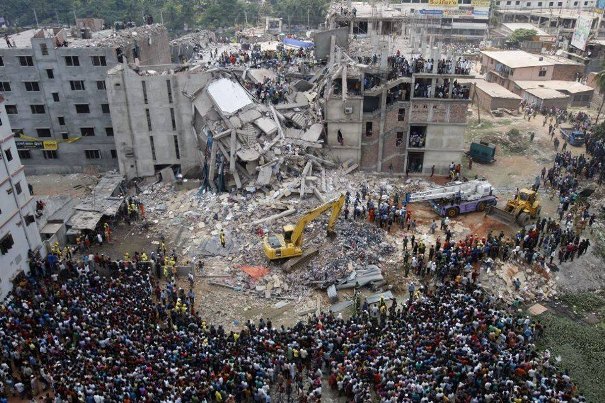 |
| Bangladeshis watch the rescue operations at the site of a building that collapsed Wednesday in Savar, leaving at least 251 dead and an unknown number of the factory’s more than 3,000 employees still trapped. |
Tragedy has again claimed the lives of scores of low-income textile workers in Bangladesh’s garment district.
An eight-story factory building in Savar collapsed killing at least 187 workers, mainly women. More than a thousand have been injured. Many more remain trapped in the rubble.
The disaster comes just five months after a factory fire killed more than 250 people in the same city, and just three months after another incident in which seven people were killed.
Police officials say factory owners ignored a warning not to allow workers into the building after cracks had been found in the building the day before.
The latest tragedy further raises questions about Bangladeshi working conditions. The country’s garment industry, the second-largest clothing exporter after China, is notorious for poor factory safety. The Bangladeshi garment industry employs more than three million people, who are among the lowest-paid workers in the world with entry-level employees making about $37 a month.
“The status quo cannot be that workers have to face death just to try to feed their families,” said Alonzo Suson, AFL-CIO’s Solidarity Center country program director in Bangladesh. “How many more workers have to die before the government, the manufacturers and the companies that source from Bangladesh start to obey the law and respect international labor standards?”
Preliminary reports show the factory provided clothing for a number of major clothing brands.
A new AFL-CIO report shows most of the major international organizations that certify working and safety conditions in less-developed nations, like Bangladesh, where most global garment manufacturing takes place, receive major funding from the same corporations seeking their “seal of approval.” In many cases such certifications follow cursory—if any—inspections and ignore major safety and health violations.
To see the AFL-CIO report, click here.